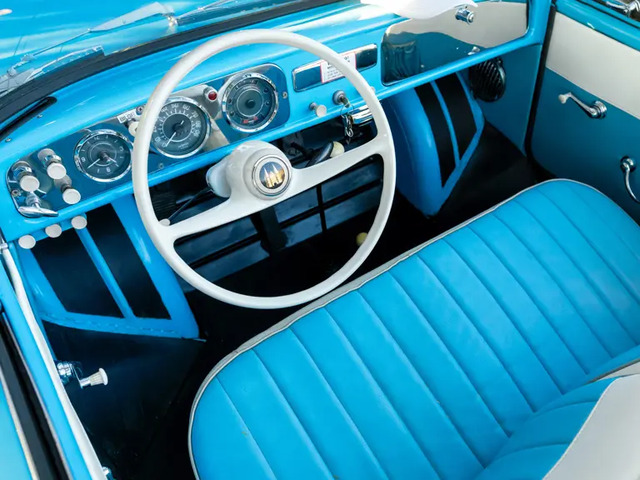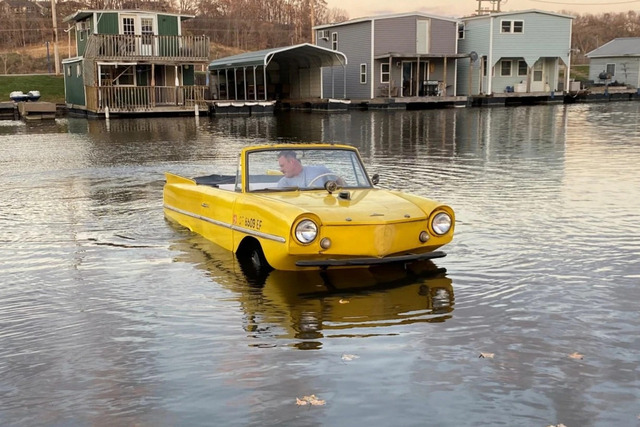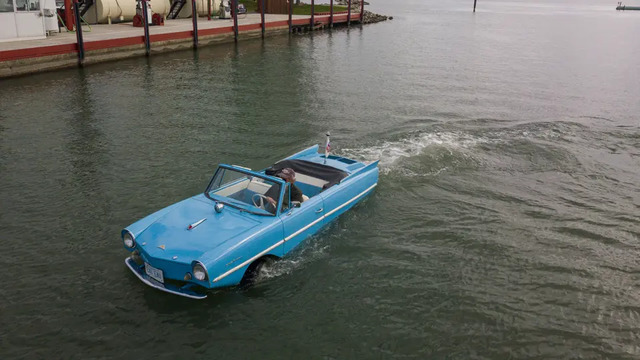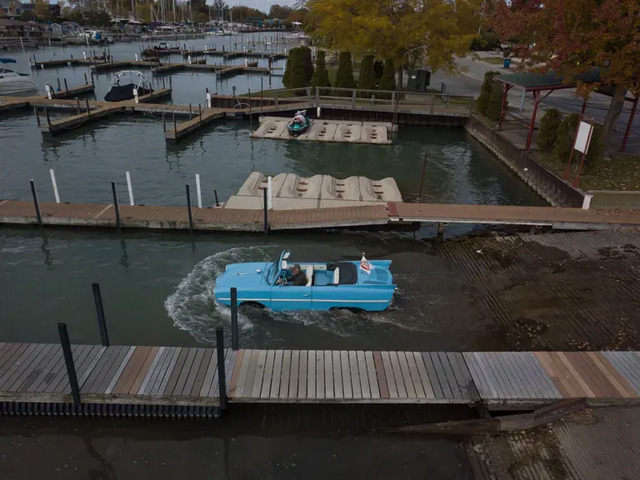The Amphicar Model 770 is a true masterpiece of engineering innovation. Designed to travel seamlessly on both land and water, this amphibious vehicle captured the imagination of car enthusiasts worldwide. Produced between 1961 and 1968, the Amphicar was ahead of its time, merging automotive and nautical technologies in a way never seen before. With only 3,878 units ever built, this rare collector’s item continues to make waves in the classic car market. Let’s dive deep into the design, performance, and legacy of this one-of-a-kind vehicle.
Design and Engineering: A Dual-Purpose Wonder

The Amphicar Model 770 was the brainchild of German designer Hans Trippel, and it was manufactured by the Quandt Group. This vehicle was not just another experimental project—it was the world’s first mass-produced amphibious car.
At the heart of the Amphicar was a 43-horsepower, four-cylinder Triumph Herald engine, positioned at the rear to drive both the wheels and the twin propellers. The car’s steel unibody construction ensured durability, while watertight seals on the doors prevented water from entering the cabin.
The transition from land to water was remarkably simple. The driver would engage a lever, switching power from the wheels to the twin propellers, while the front wheels acted as rudders. With a top speed of 70 mph on land and 7 mph on water, the Amphicar proved itself as a functional vehicle in both environments.
Driving Experience: Smooth on Land, Seamless on Water

On land, the Amphicar handled like a small European car—compact, efficient, and easy to maneuver. Its four-speed manual transmission made for a smooth drive, while the lightweight chassis allowed for decent acceleration, considering its dual-purpose build.
However, the real magic happened when it hit the water. The rear-mounted propeller system provided steady propulsion, and the car floated effortlessly, navigating through lakes and rivers with ease. Steering was controlled using the front wheels, which functioned like a boat’s rudder, giving the driver a unique boating experience.
While it wasn’t designed for rough waters, the Amphicar could handle calm rivers and lakes with remarkable stability. Many owners fondly recall the thrill of driving straight into a lake while bystanders watched in amazement, thinking the car was about to sink—only to see it sail smoothly across the water.
Production and Rarity: Why the Amphicar is a Collector’s Dream
The Amphicar had a production run from 1961 to 1968, but it never achieved widespread success due to high production costs and limited demand. Out of the 3,878 units built, only 3,046 were imported to the United States before stricter safety and environmental regulations halted further sales in 1968.
Despite its niche market, the Amphicar developed a cult following. Today, well-preserved models fetch upwards of $100,000 at auctions, with some pristine examples exceeding $140,000. This rarity has made it a prized possession among collectors and classic car enthusiasts.
Restoration and Maintenance: Keeping the Amphicar Afloat
Owning an Amphicar requires dedication, as maintaining an amphibious vehicle involves unique challenges. Rust is a major concern due to exposure to water, making regular inspections and protective coatings essential. The watertight seals around the doors and front trunk must be maintained to prevent leaks.
Fortunately, parts are still available through specialized suppliers like Gordon Imports of California, which provides original components for restoration projects. Enthusiasts and restorers work tirelessly to keep these vehicles in top shape, ensuring that the Amphicar legacy lives on for generations.
Cultural Impact: The Amphicar in Media and Popularit

The Amphicar’s unique charm has landed it in films, advertisements, and television shows over the decades. It was featured in movies like Pontiac Moon and TV shows such as Pawn Stars, where its rarity and value were highlighted.
Even U.S. President Lyndon B. Johnson famously owned an Amphicar, delighting in pranking unsuspecting passengers by driving straight into the water, pretending the brakes had failed! His love for the car further cemented its place in pop culture history.
The Amphicar’s Lasting Legacy

Even though production ended in 1968, the Amphicar Model 770 remains one of the most extraordinary vehicles ever built. Its combination of car and boat made it a groundbreaking invention that still turns heads today. The rarity, engineering ingenuity, and sheer fun factor ensure that the Amphicar remains a coveted classic.
For car collectors, history buffs, and adventure-seekers alike, the Amphicar Model 770 is more than just a vehicle—it’s a symbol of innovation and imagination, a reminder that sometimes, the most extraordinary ideas are the ones that truly stand the test of time.


